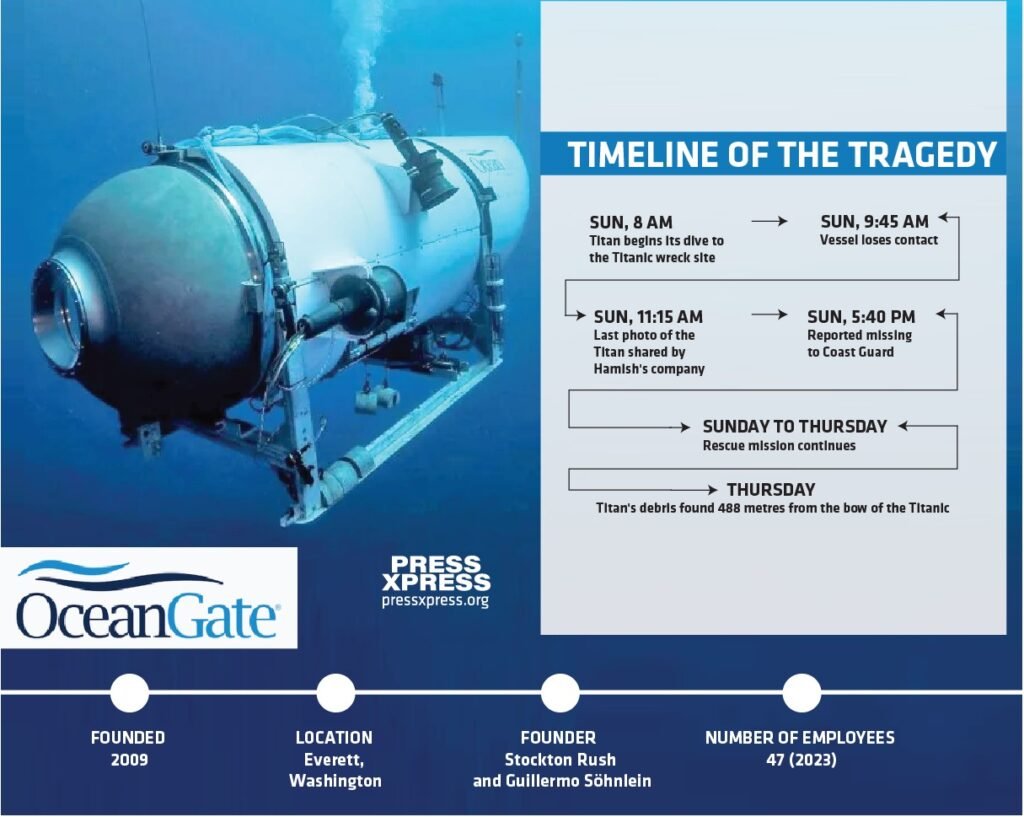The recent catastrophic implosion of the deep-sea submersible vessel Titan has sent shockwaves through the world of extreme tourism. This tragic incident, resulting in the loss of all five passengers aboard, raises critical questions about the safety measures and regulations governing the burgeoning industry. OceanGate Expeditions, the company operating the ill-fated Titan, capitalized on the allure of exploring the legendary Titanic wreck, catering to wealthy individuals seeking extraordinary experiences. However, a combination of design flaws, inadequate materials, and a lack of effective oversight have led to this devastating and avoidable event.
You can also read: Is Global South’s strategic nonalignment reshaping global dynamics?
The Downsides of Extreme Tourism:
Since the discovery of the Titanic wreck in 1985, it has become an object of fascination for explorers and adventurers alike. The desire to witness this historical marvel first-hand has birthed the concept of extreme tourism, where wealthy individuals willingly pay exorbitant fees for unique and adrenaline-pumping experiences. OceanGate Expeditions, recognizing the market potential, introduced eight-day expeditions that allow guests to delve into the depths of the Atlantic Ocean to explore the Titanic wreckage in custom-built submersibles made of carbon fibre and titanium. Despite the hefty price tag of $250,000 per participant, the demand for these once-in-a-lifetime journeys has remained strong, attracting thrill-seekers who yearn to push the boundaries of normal travel.
Questioning the Safety of Titan:
In the wake of the Titan’s tragic demise, doubts have emerged regarding the submersible’s safety measures. James Cameron, renowned filmmaker and deep-sea explorer, voiced concerns about design flaws that may have contributed to the accident. Cameron, who extensively explored the ocean’s depths, including diving to the planet’s deepest recesses in a self-designed vehicle, pointed out unusual anomalies in the Titan’s construction that should have been identified prior to its use. The occurrence of a catastrophic implosion at such depths raised questions about major design flaws, leading to doubts about the submersible’s suitability for extreme conditions.

In an interview with Reuters, Cameron expressed reservations about the submersible’s utilization of carbon fibre composites and a titanium hull. While carbon-fibre composites are widely used in the aviation industry due to their lightweight and high strength, their performance under extreme pressure conditions in the deep sea is questionable. The choice of materials and technologies employed in the creation of the Titan raised red flags for Cameron, who criticized the lack of thorough testing and evaluation. Furthermore, the fact that the owner and CEO of OceanGate, Stockton Rush, was also the pilot of the ill-fated submersible raised concerns about the conflicts of interest and the integrity of safety certifications.
Greed and Lack of Regulations:
The tragedy surrounding Titan underscores the unsettling reality of unchecked greed and regulatory oversights in the extreme tourism industry. OceanGate’s primary focus on profitability and meeting the demands of wealthy clientele appears to have overshadowed rigorous safety considerations. The substantial financial incentives associated with deep-sea tourism make any hint of safety concerns potentially disastrous for companies like OceanGate. Consequently, safety issues may have been downplayed or ignored altogether to protect the company’s reputation and bottom line.
Compounding the problem is the lack of comprehensive government regulations governing deep-sea tourism. Jon Heshka, an academic at Thompson Rivers University, highlights the disinterest of regulators in overseeing a niche market until it becomes clear that self-regulation is insufficient. The absence of effective oversight allowed OceanGate to operate without proper scrutiny, compromising the safety of passengers who put their lives in the hands of the company. This tragedy serves as a sobering reminder that self-regulation is inadequate, necessitating robust regulatory frameworks to protect the lives of participants in extreme tourism activities.
The avoidable tragedy of the Titan submersible highlights the dark underbelly of extreme tourism, where profit-driven ventures and lax regulations can result in devastating consequences. The loss of five lives is a sombre reminder of the urgent need for industry-wide introspection and enhanced safety measures. Extreme tourism must prioritize the welfare of participants above all else, ensuring that adventures remain exhilarating yet secure. Governments, in turn, must establish stringent regulations to hold companies accountable for the safety of their offerings. Only through collective action can the industry learn from this tragic event and prevent future calamities, ensuring that the pursuit of extraordinary experiences does not come at the cost of human lives.


